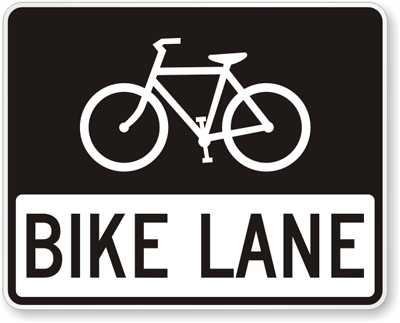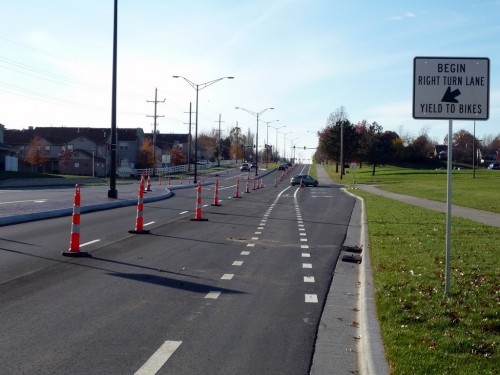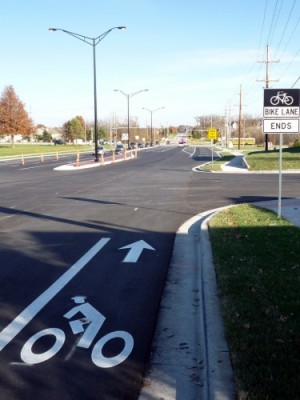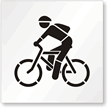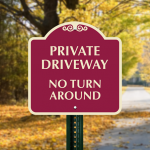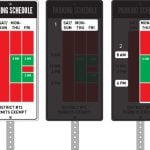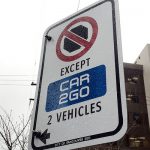Bicycle Signs and Markings
Bicycle Signs need to be placed in a way that cyclists and pedestrians find it easy and safe to find their way. Bicycles are as much a part of the road as any other vehicle. But cyclists have to be extra cautious and responsible towards their own safety and of others on the road.
They must follow certain rules like:
- Slowing down if the path is crowded.
- Sound the bell to warn others.
- Maintain an appropriate speed.
- Be considerate to pedestrians and give them way.
- Follow the rules of the road.
In addition, cyclist should always travel with the flow of traffic when in a bicycle lane.
Newer bicycle safety signs have been developed for the increased use of bicycling infrastructure and safety. The matter of bicycle safety has come in limelight as transportation attention is gradually shifting from gas-powered vehicles to more environment friendly means of commute. Every bicyclist should be aware of the common bicycle safety signs on the road. The Manual for Uniform Traffic Control Devices (MUTCD) has given markings for bicycle lanes.
1. Sharrow: A sharrow is a road lane marking that shows a picture of a bicycle with two chevron marking above it. The main purpose of a sharrow is to inform motorist to share the road with the bicyclists. Sharrows are about 3 feet wide and 10 feet long. Sharrows tend to keep bicyclists from riding too close to parked vehicles and they help reduce wrong-way riding by bicyclists. Most importantly, they assist in reducing the bicycle-car clashes and pedestrian-cyclist conflicts.
2. Bike lane markings: As per the Standards given by the MUCTD, lanes for bicycles should be clearly marked by the words “Bike Lane”. These signs serve three basic purposes: regulating bicycle usage, warning of unexpected conditions and directing riders along established routes. Bike signs are similar to requirements for other roadway signs in design, color, letters and symbols.
3. Intersection signs: Many traffic accidents are caused by motorist while taking an improper turn. Most common point of conflict in approaching intersections is when a motorist wants to turn right across the path of a bicyclist proceeding straight. The sign that is applied to avoid collisions is “Begin Right Turn Lane, Yield to Bikes.” Bike lanes are marked with dotted lines where cars can cross the bike lane into another motor vehicle lane.
4. Usage of bicycle signals: Some complicated intersections are dangerous to traverse on a bike, so using bicycle signals for crossing is the best solution to be safe. The use of bicycle signals warns the bicyclist to cross the intersection when the traffic light is on for bicyclists and no cars are present.
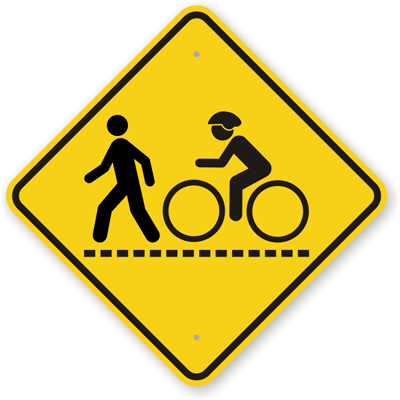 5. Bicycle detector marking: Detection of bicyclists at intersections can reduce number of car-bicycle collision. A marking on the road depicts a bicycle and a rider placed in the middle of a vertical line. The most widely used detectors are video detectors. A video detector can pick up a bicycle’s presence at an intersection from a distance. It is installed on a main pole with a video image processing capability, which makes easier for the motorist to be aware of the bicyclist.
5. Bicycle detector marking: Detection of bicyclists at intersections can reduce number of car-bicycle collision. A marking on the road depicts a bicycle and a rider placed in the middle of a vertical line. The most widely used detectors are video detectors. A video detector can pick up a bicycle’s presence at an intersection from a distance. It is installed on a main pole with a video image processing capability, which makes easier for the motorist to be aware of the bicyclist.
Bike safety signs are designed to keep bicyclists safe from automobiles and also to make pedestrians safe when they share a path with bicyclists. Bicycle signs are reminders for drivers to be aware of bikes on the roadways.
Related Posts
Category: Miscellaneous












